Arisi upma

arisi upma

🌾 Arisi Upma (Rice Rava Upma) – A Traditional South Indian Tiffin from Grandmother’s Kitchen
Arisi Upma, or Rice Rava Upma, is one of those humble, traditional tiffin dishes that has been around since our grandmothers’ time — and probably even before that. It’s a simple, comforting dish made with coarsely ground rice, flavored with cumin, cracked pepper, a touch of dal, green chilies, and curry leaves.
In earlier days, rice was at the heart of most meals. Since it was often homegrown or bought in bulk, people found creative ways to use it in everyday cooking. Arisi Upma was one such invention — wholesome, filling, and economical. Rava or semolina wasn’t as commonly used then, so rice was the obvious choice for upma and many other tiffin items.
Rice flour and rice rava were typically milled at home using a heavy mortar and pestle — a slow, laborious process but one that gave an unmistakably fresh, earthy flavor. Our ancestors truly knew how to make the most of simple ingredients.
The traditional method of making rice rava was indeed a process — soaking rice, spreading it on a cloth to air dry, and then pounding it coarsely at home. The result was soft, uneven grains that cooked beautifully into a flavorful upma. In many homes, it’s still prepared the old way, especially in a vengala paanai (bronze pot) — which keeps the upma soft and warm for hours. There’s truly no substitute for that taste!
But for those short on time, or without a bronze pot, there’s good news — we now have excellent store-bought rice rava (the same variety used for idlis) that gives almost the same result. The grains are even, cleanly milled, and perfect for quick, tasty upma.
I must confess, I often use this ready rice rava myself — and I’ve even turned it into a ready-to-cook mix for travel days! It’s my little kitchen hack for enjoying comforting Arisi Upma anywhere — all I need is a small rice cooker.
While I cherish traditional recipes, I also believe in keeping cooking simple and practical for today’s lifestyle. My goal is to help beginners, bachelors, and students cook wholesome, homely food without getting discouraged by time-consuming methods. That’s why I’ve created several ready-to-make mixes — not just for tiffin items, but even side dishes — perfect for travel or quick meals.
Traditional flavors, simplified for everyday life — that’s what my kitchen is all about. 🌿Arisi Upma — a humble yet comforting South Indian tiffin — carries the warmth of home in every bite. Made the traditional way using soaked, drained, and sun-dried rice ground coarsely into fresh rice rava, this upma has a rustic texture and an earthy aroma that no store-bought version can match. Seasoned with coconut oil, mustard, and crunchy urad dal, it pairs beautifully with chutney, pickle, or just a drizzle of ghee. This old-fashioned Arisi Upma is simple, wholesome, and takes you straight back to those serene village mornings when breakfast was cooked slowly with care and love.
Ingredients
1 cup raw rice
1/4 cup toor dal or less ...we like little more dal in rice upma so i have used 1/4 cup .
1 tsp pepper , add more for a spicier upma
1 tsp cumin
2 1/2 cups water
2 tbsp coconut oil ....generous amount of coconut oil will give super soft moist upma
For tempering
2-3 tbsp coconut oil
1 tsp mustard seeds
1 tsp udad dal
1 tsp chana dal
curry leaves
2-3 green chillies red chillies as preferred
salt
1/4 cup grated coconut
Method
Wash and drain rice and toor dal, spread on a clean cotton cloth to air dry
after about 2 hours, grind to a coarse powder sieve and use if you want fluffy rice upma, dont sieve if you prefer slightly a mushy consistency water required will depend on qualityy of rice, sometimes for 1 cup rice dal mixture, we may need about 3 cups water also . i needed just 2 1/2 cups water . for preparing upma, watch video below.

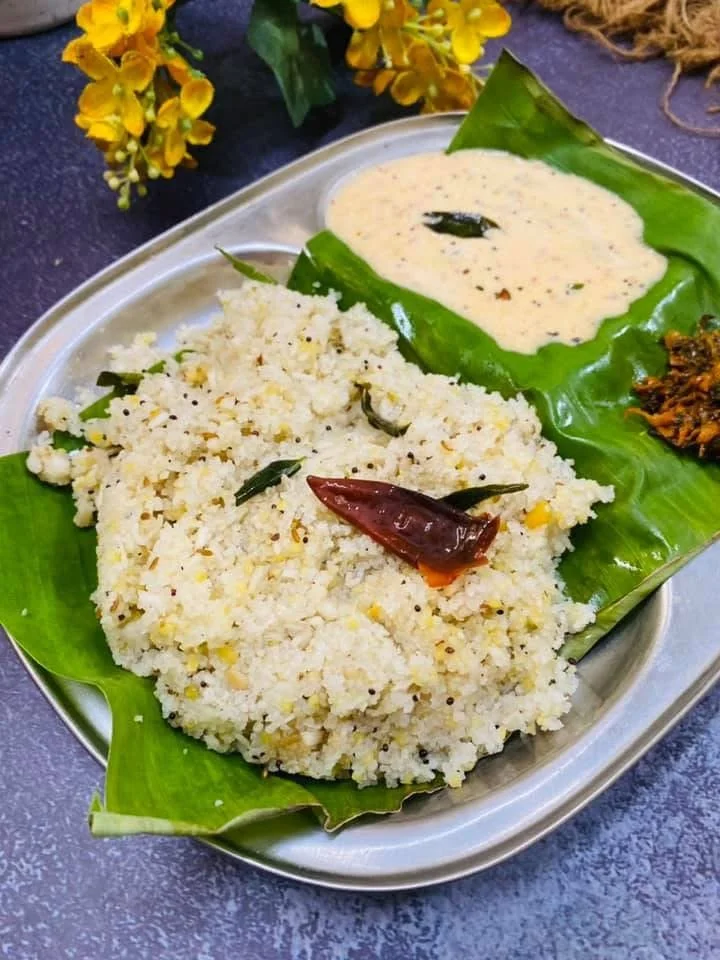
arisi upma
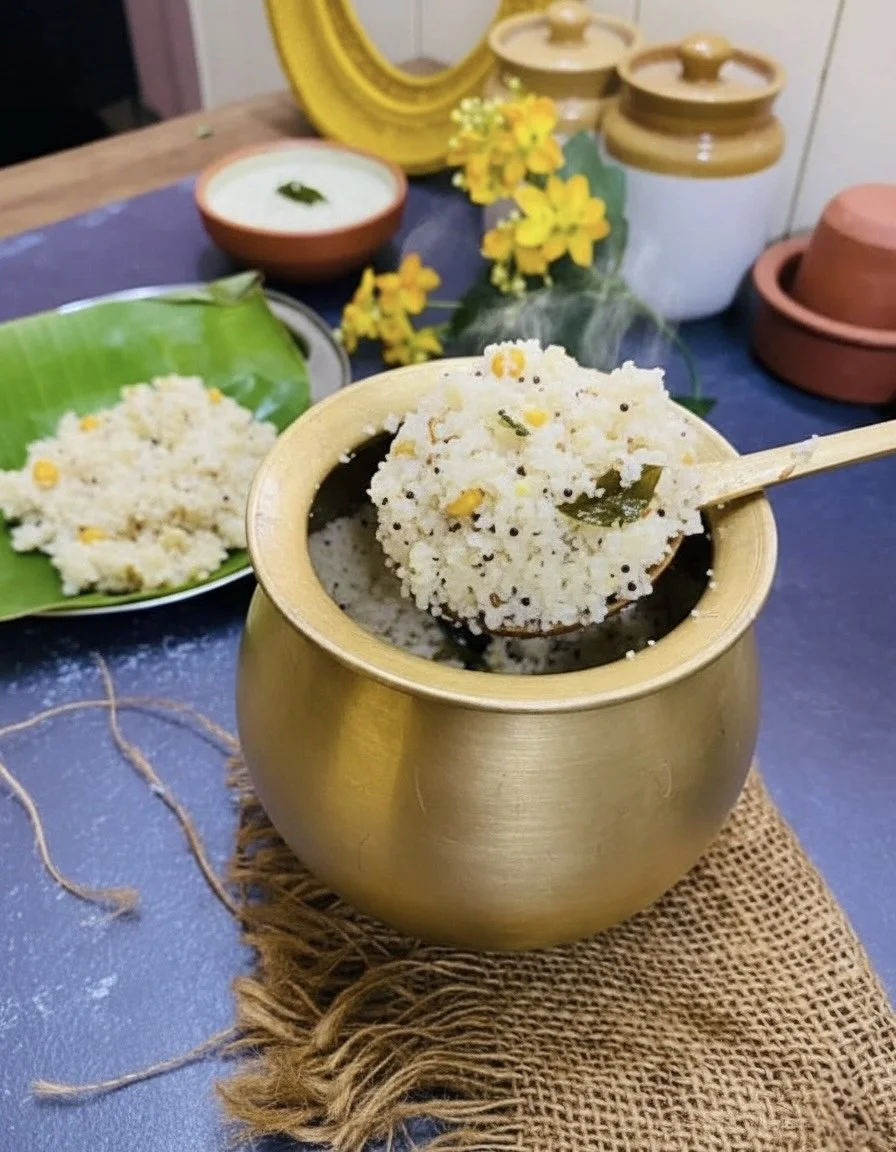
Beetroot Rice or Beetroot Pulao is a colorful, one-pot South Indian dish made with rice, beetroot, and mild spices. Quick to make, healthy, and perfect for lunchboxes or weekday meals.
Easy lunch box recipe , capsicum rice that can be prepared under 15 minutes if you have cooked rice and the masala ingredients powdered and kept ready for lunch box variety rice dishes .befroe hand . It makes it simpler and hassle free if we can prepare the basic masala powder in advance that can be used to make other variety rice dishes .
A comforting South Indian classic — Rasam Sadham made the easy one-pot way! Tangy, aromatic, and ready in minutes, this quick rasam rice is the perfect weekday meal or cozy comfort bowl when you crave homely flavors without spending hours in the kitchen.
Discover the authentic recipe for Mani Kozhukkatai, a soft and savory South Indian dumpling , A perfect snack for any occasion!
A comforting South Indian side dish made with roasted brinjal, tamarind, and a blend of spices, Brinjal Gothsu is the perfect traditional accompaniment to Pongal, idli, or dosa. This easy, homestyle recipe brings together smoky flavors, tangy notes, and a touch of spice — a nostalgic taste of Tamil Nadu cuisine in every bite.
A timeless South Indian tiffin from our grandmothers’ kitchens — Arisi Upma or Rice Rava Upma — made with coarsely ground rice, simple spices, and plenty of nostalgia. Traditional in taste yet easy to make with today’s ready rice rava — comfort in every bite
A flavorful, aromatic Thai Green Curry that brings together creamy coconut milk, fresh herbs, and delicate spices — the perfect blend of heat and harmony for a cozy, flavorful meal.
Bring the divine flavor of Melukote Iyengar Puliyogare to your table — the temple-style tamarind rice from Karnataka that’s sweet, tangy, spicy, and utterly soulful. Simple to make, yet packed with that sacred prasadam magic.
Get ready to celebrate Diwali with a tempting collection of traditional Indian snacks and savouries! From crispy murukku, crunchy thattai, and flavorful mixture to festive sweets and bites, this gallery makes it easy to find your favorites. Each image below links directly to a detailed recipe so you can plan your Diwali snack platter with ease. Perfect for gifting, sharing, or enjoying at home with family.
A classic South Indian snack, Mullu Thengoyal is crunchy, flavorful, and perfect for festive snacking. Step-by-step recipe to make this traditional murukku at home.
Learn how to make soft, melt-in-the-mouth Gulab Jamuns at home. This classic Indian dessert features golden fried dumplings soaked in fragrant rose syrup, perfect for Diwali, weddings, or festive celebrations.
Crispy and light, Thenkuzhal Murukku is a classic South Indian Diwali snack made with rice flour and urad dal flour. This traditional recipe delivers that perfect golden crunch and melt-in-the-mouth texture that makes every festive celebration special
Soft Ras Malai discs soaked in creamy saffron milk and garnished with pistachios and saffron strands – traditional Indian dessert
Soft, spongy Ras Malai soaked in creamy saffron milk — a royal Indian dessert perfect for Diwali and celebrations.
Deliciuous Bengal sweet Cham cham that can be prepared easily at home .Soft, spongy Bengali Cham Cham sweets made with chenna, filled with mawa, and coated in coconut — a beautiful festive dessert for Diwali and celebrations.
Soft and grainy Kalakand made with milk and paneer — a rich, creamy Indian milk cake perfect for Diwali and festive celebrations.
Learn how to make perfect Badusha at home — a traditional South Indian sweet that’s crisp outside, soft inside, and glazed with sugar syrup. This easy Badusha recipe is ideal for Diwali and festive occasions.
Make delicious Seven Cup Burfi at home with this easy recipe using milk, sugar, ghee, coconut, and gram flour. This traditional South Indian sweet is rich, melt-in-the-mouth, and perfect for Diwali or festive occasions.
Coconut Milk Thengoyal is a crispy and flavorful South Indian snack from Chettinad cuisine, made with rice flour and coconut milk. Perfect for Diwali, this light and aromatic murukku is a delicious festive treat to enjoy with tea or sweets.
Bring home the authentic taste of Tamil Nadu with this Instant Puliyodharai Podi—a fragrant, tangy-spicy mix that turns plain rice into temple-style Puliyodharai in minutes. Just mix with hot rice and gingelly oil for a delicious, travel-friendly, lunchbox-perfect meal.
Beetroot Rice or Beetroot Pulao is a colorful, one-pot South Indian dish made with rice, beetroot, and mild spices. Quick to make, healthy, and perfect for lunchboxes or weekday meals.
Easy lunch box recipe , capsicum rice that can be prepared under 15 minutes if you have cooked rice and the masala ingredients powdered and kept ready for lunch box variety rice dishes .befroe hand . It makes it simpler and hassle free if we can prepare the basic masala powder in advance that can be used to make other variety rice dishes .
A comforting South Indian classic — Rasam Sadham made the easy one-pot way! Tangy, aromatic, and ready in minutes, this quick rasam rice is the perfect weekday meal or cozy comfort bowl when you crave homely flavors without spending hours in the kitchen.
Discover the authentic recipe for Mani Kozhukkatai, a soft and savory South Indian dumpling , A perfect snack for any occasion!
A comforting South Indian side dish made with roasted brinjal, tamarind, and a blend of spices, Brinjal Gothsu is the perfect traditional accompaniment to Pongal, idli, or dosa. This easy, homestyle recipe brings together smoky flavors, tangy notes, and a touch of spice — a nostalgic taste of Tamil Nadu cuisine in every bite.
A timeless South Indian tiffin from our grandmothers’ kitchens — Arisi Upma or Rice Rava Upma — made with coarsely ground rice, simple spices, and plenty of nostalgia. Traditional in taste yet easy to make with today’s ready rice rava — comfort in every bite
A flavorful, aromatic Thai Green Curry that brings together creamy coconut milk, fresh herbs, and delicate spices — the perfect blend of heat and harmony for a cozy, flavorful meal.
Bring the divine flavor of Melukote Iyengar Puliyogare to your table — the temple-style tamarind rice from Karnataka that’s sweet, tangy, spicy, and utterly soulful. Simple to make, yet packed with that sacred prasadam magic.
Get ready to celebrate Diwali with a tempting collection of traditional Indian snacks and savouries! From crispy murukku, crunchy thattai, and flavorful mixture to festive sweets and bites, this gallery makes it easy to find your favorites. Each image below links directly to a detailed recipe so you can plan your Diwali snack platter with ease. Perfect for gifting, sharing, or enjoying at home with family.
A classic South Indian snack, Mullu Thengoyal is crunchy, flavorful, and perfect for festive snacking. Step-by-step recipe to make this traditional murukku at home.
Learn how to make soft, melt-in-the-mouth Gulab Jamuns at home. This classic Indian dessert features golden fried dumplings soaked in fragrant rose syrup, perfect for Diwali, weddings, or festive celebrations.
Crispy and light, Thenkuzhal Murukku is a classic South Indian Diwali snack made with rice flour and urad dal flour. This traditional recipe delivers that perfect golden crunch and melt-in-the-mouth texture that makes every festive celebration special
Soft Ras Malai discs soaked in creamy saffron milk and garnished with pistachios and saffron strands – traditional Indian dessert
Soft, spongy Ras Malai soaked in creamy saffron milk — a royal Indian dessert perfect for Diwali and celebrations.
Deliciuous Bengal sweet Cham cham that can be prepared easily at home .Soft, spongy Bengali Cham Cham sweets made with chenna, filled with mawa, and coated in coconut — a beautiful festive dessert for Diwali and celebrations.
Soft and grainy Kalakand made with milk and paneer — a rich, creamy Indian milk cake perfect for Diwali and festive celebrations.
Learn how to make perfect Badusha at home — a traditional South Indian sweet that’s crisp outside, soft inside, and glazed with sugar syrup. This easy Badusha recipe is ideal for Diwali and festive occasions.



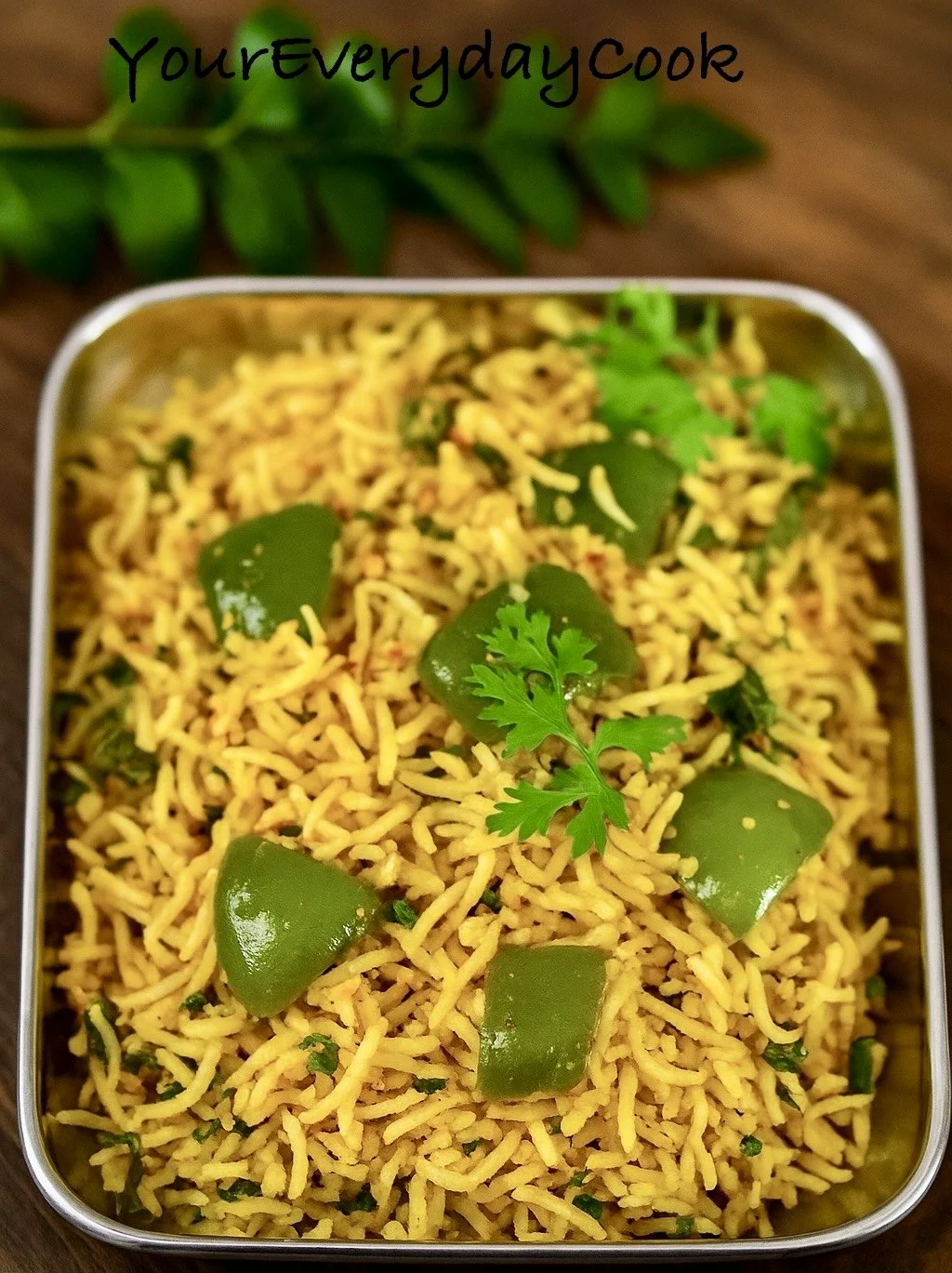
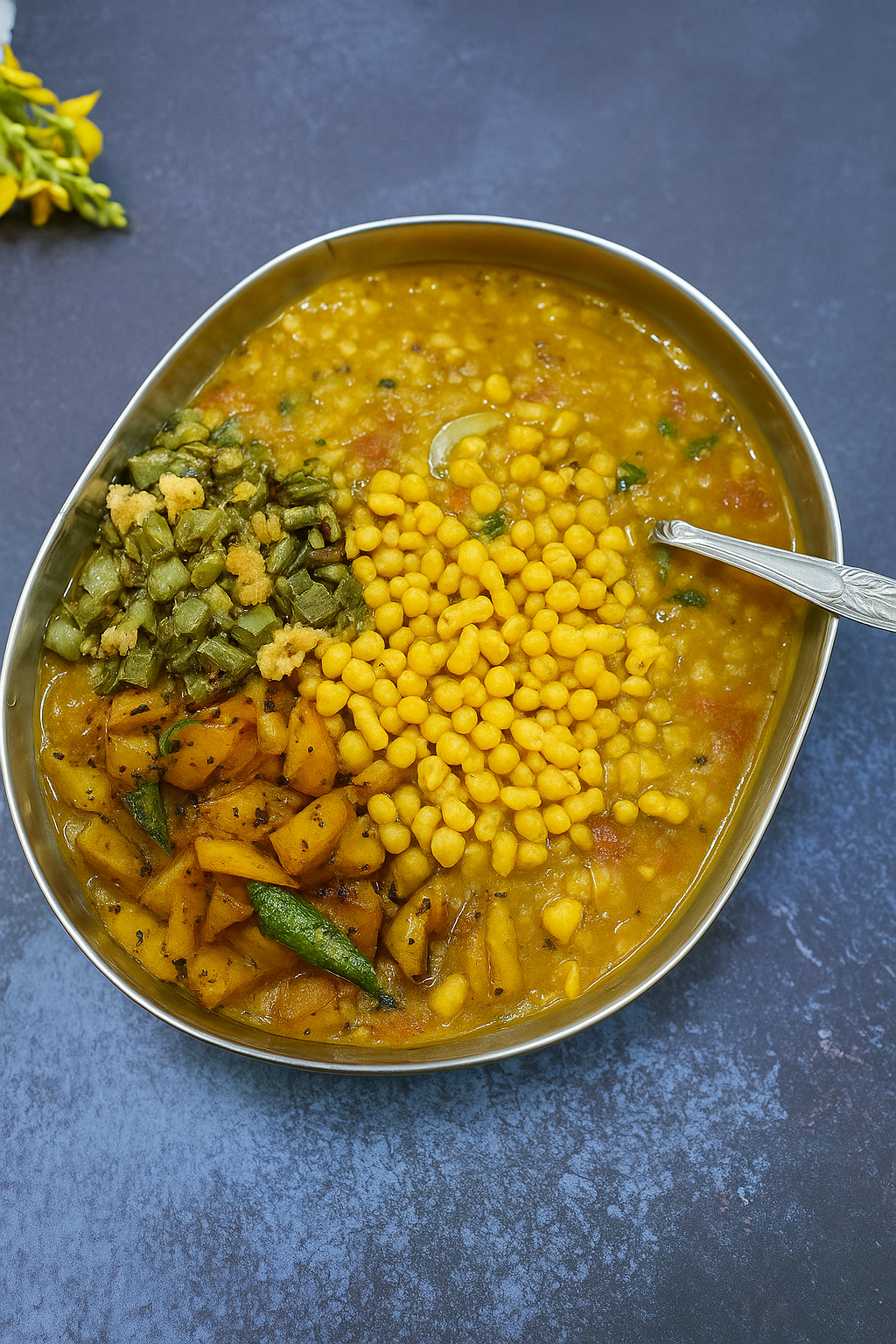

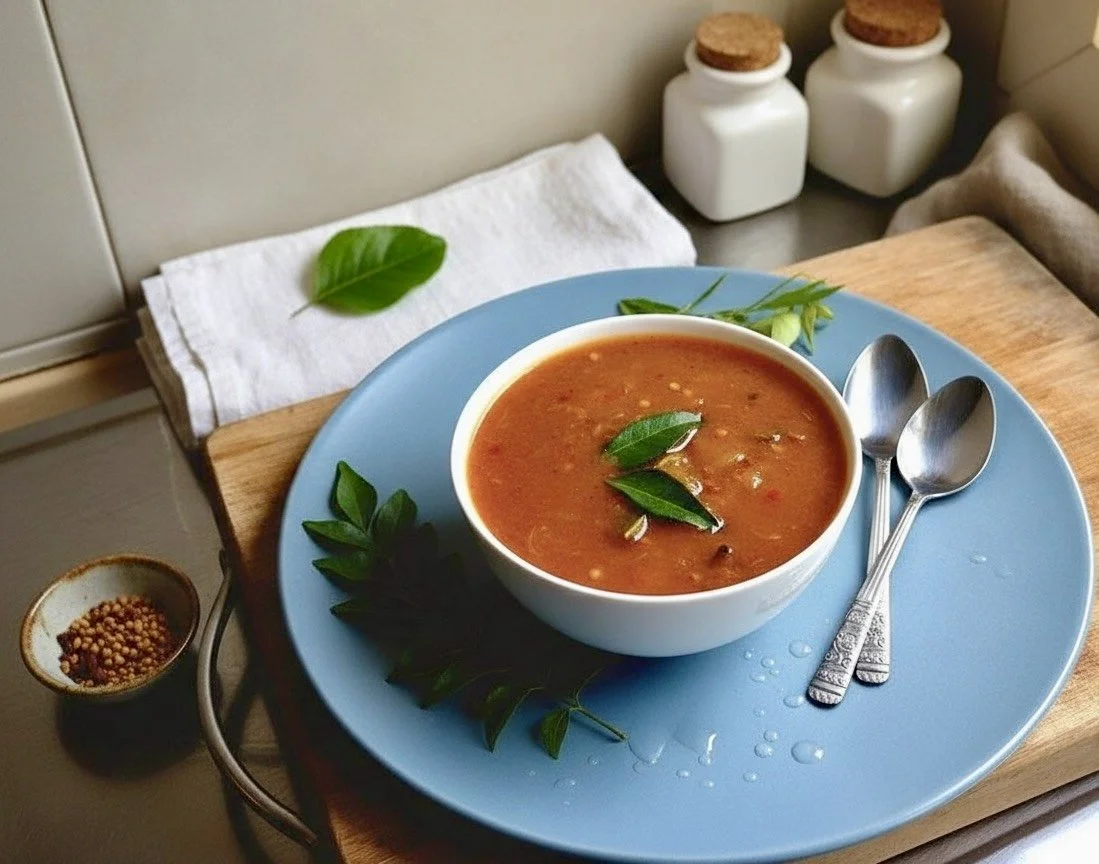
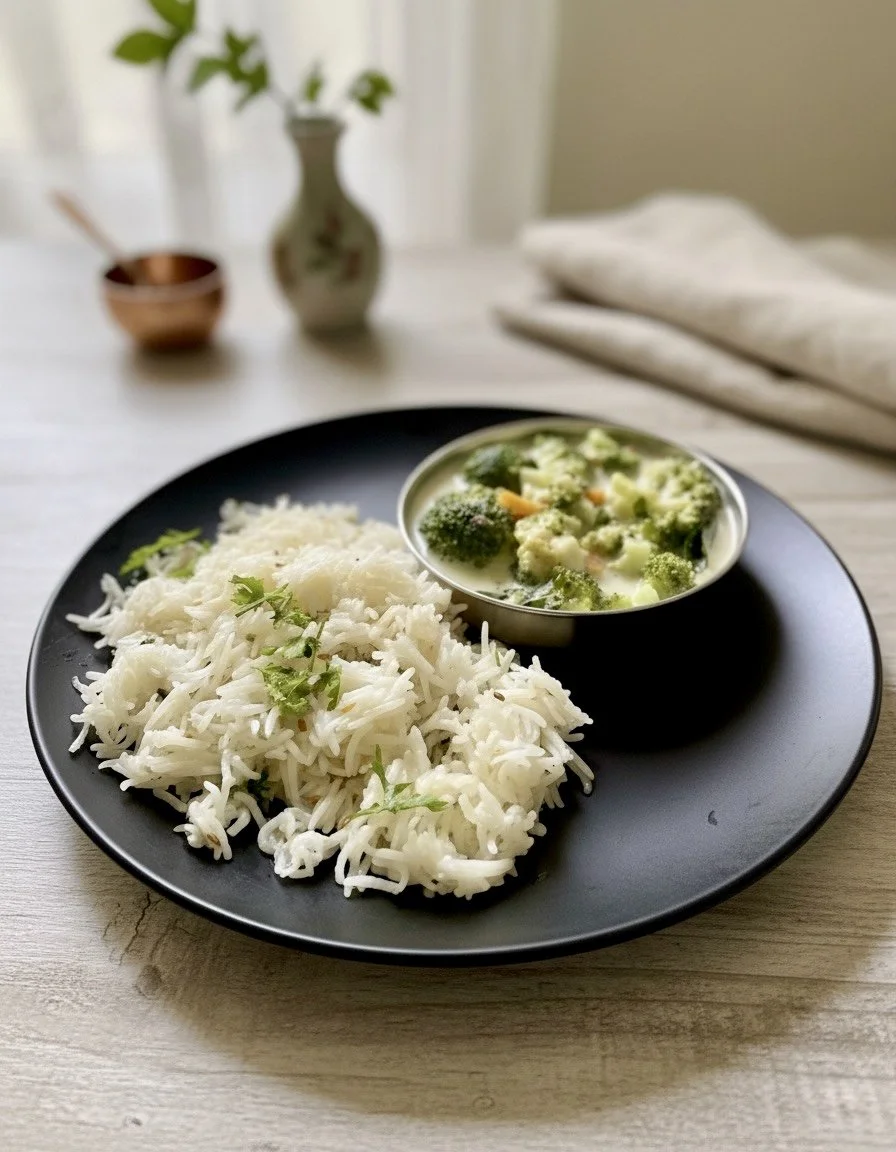
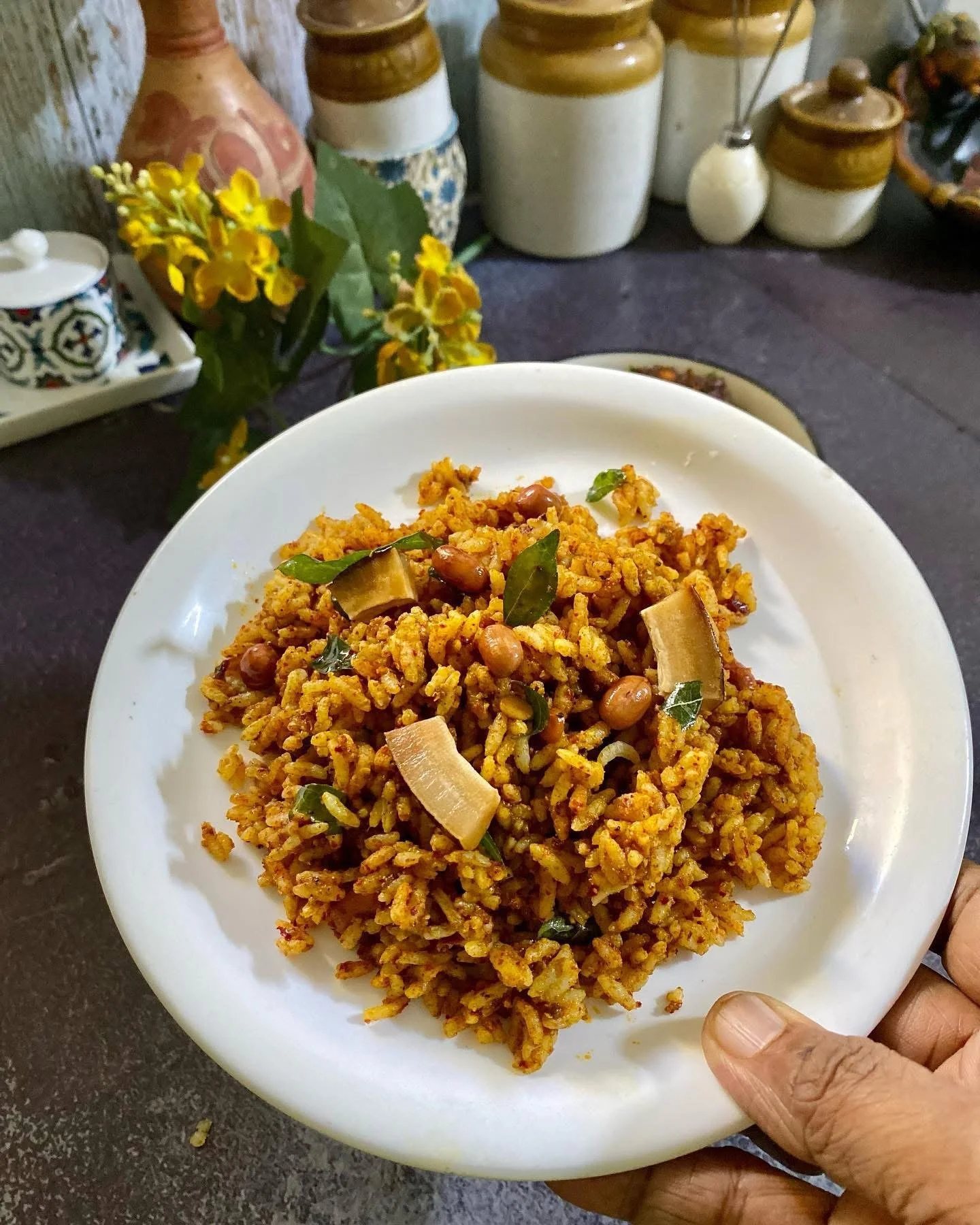
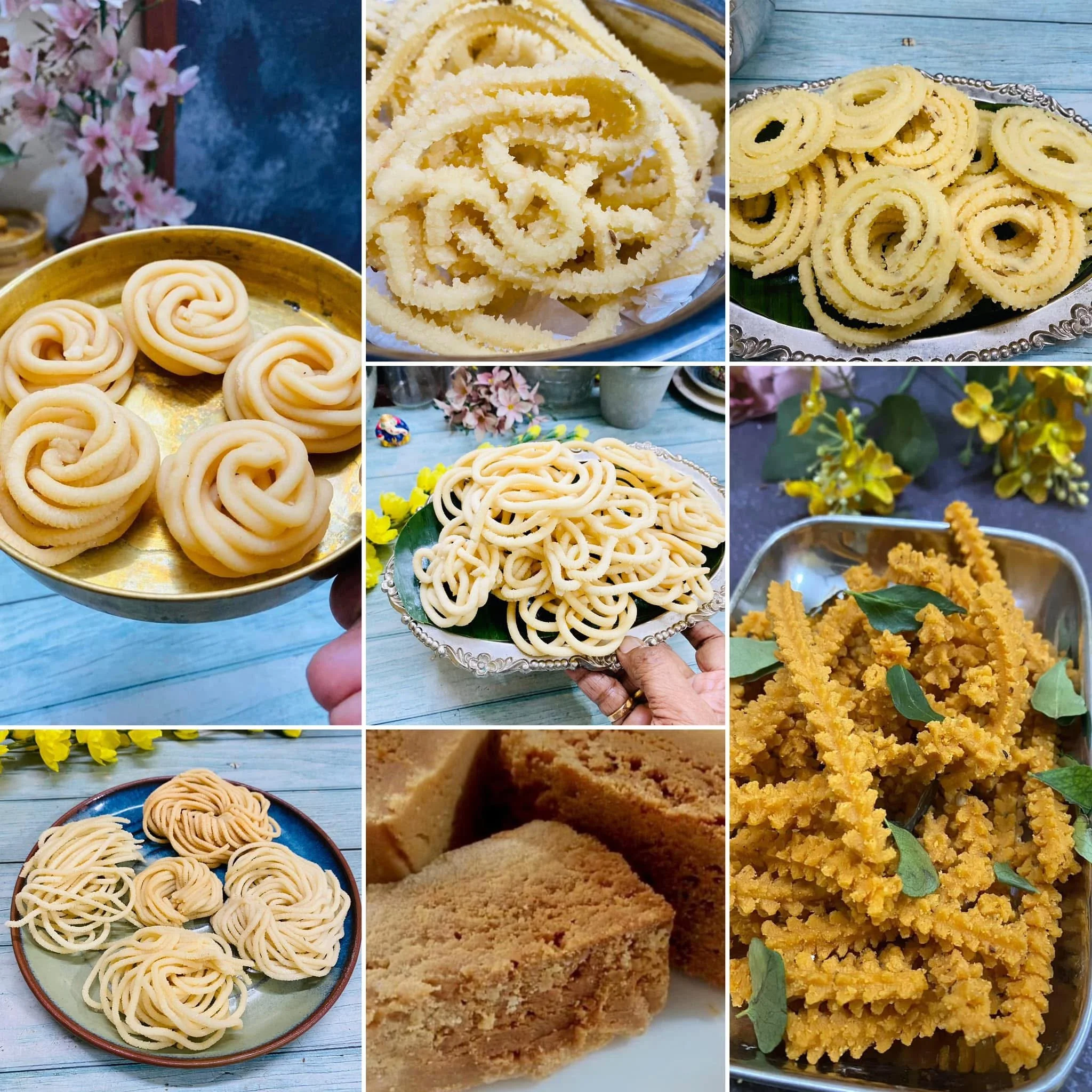
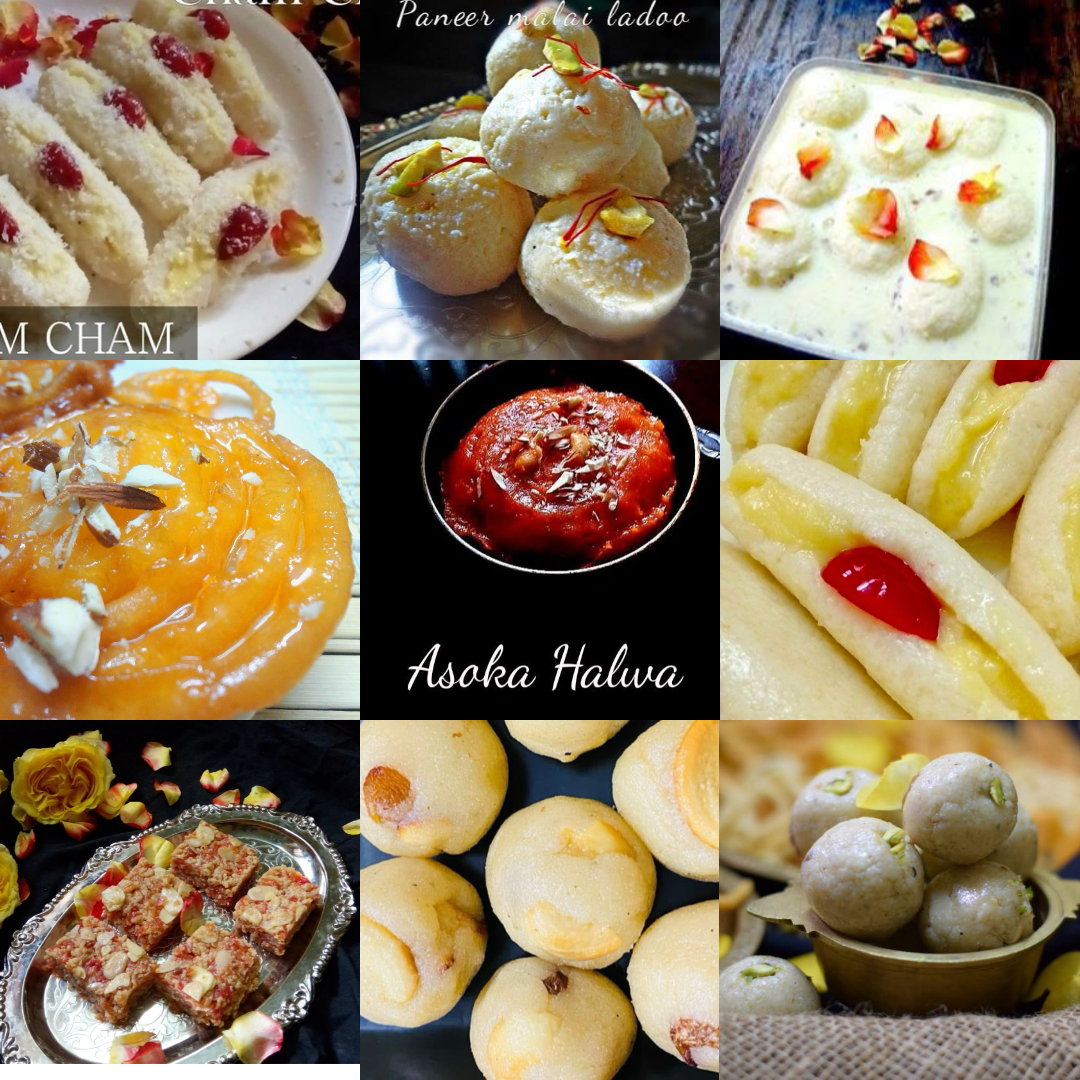
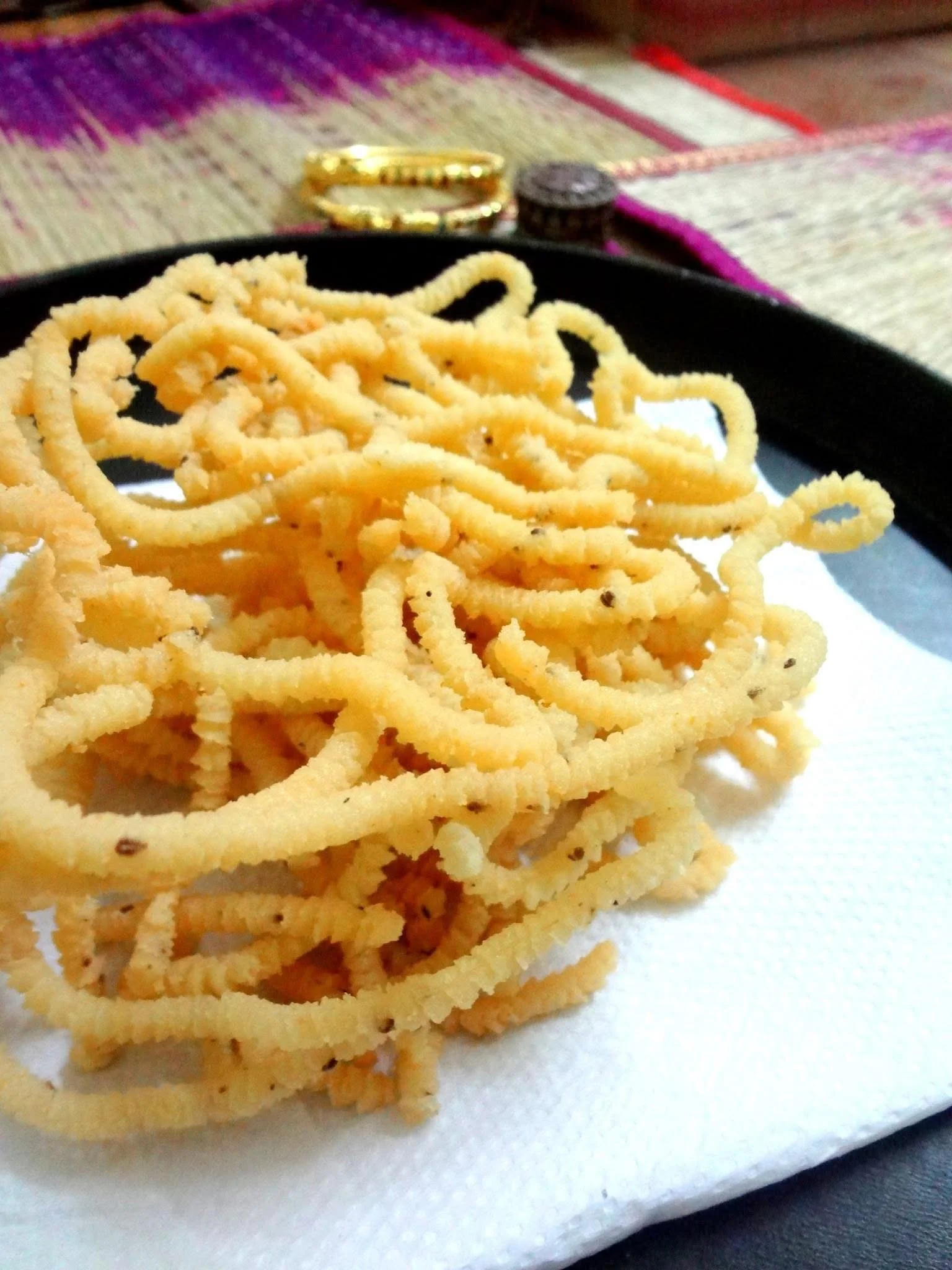

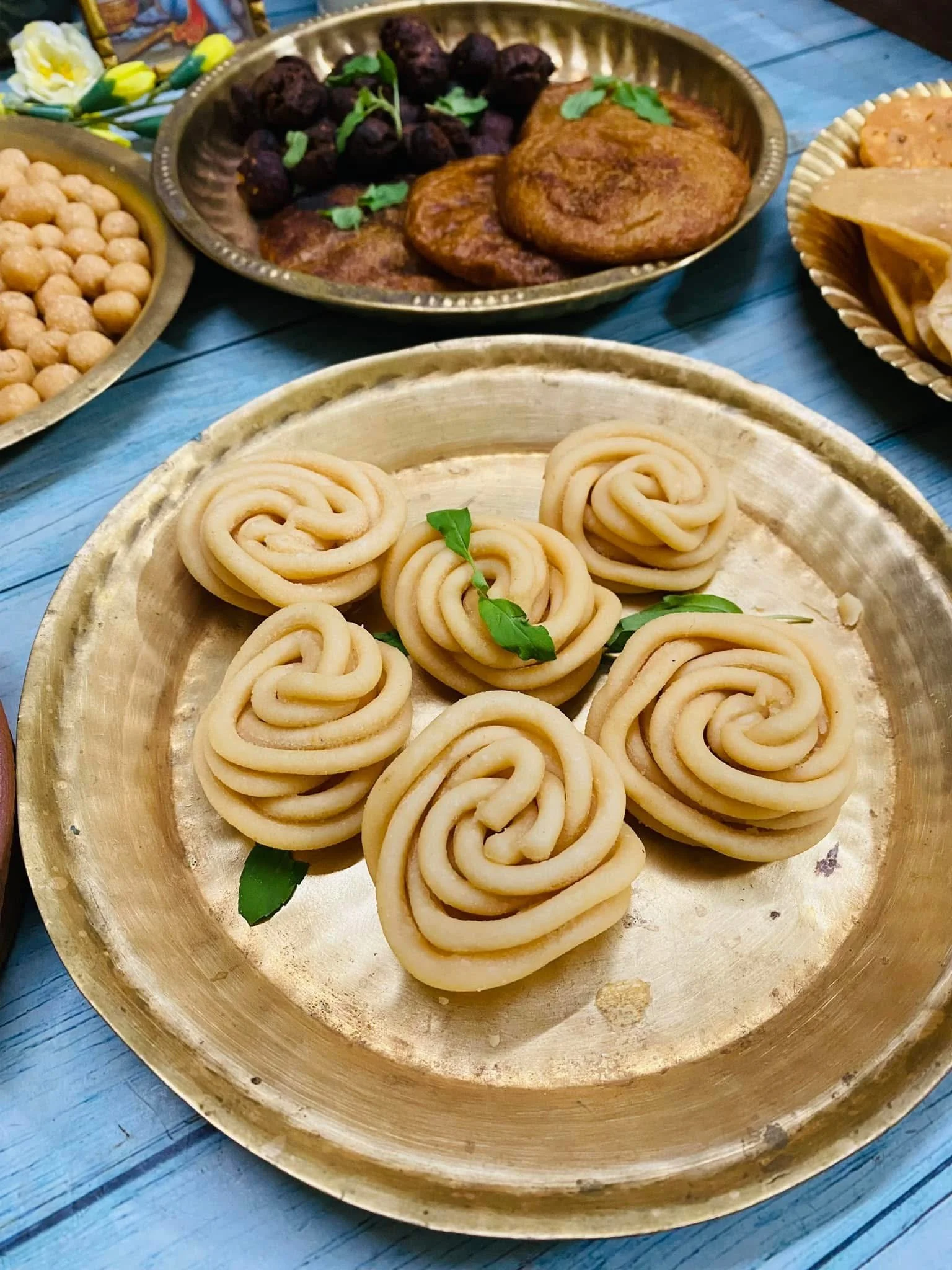


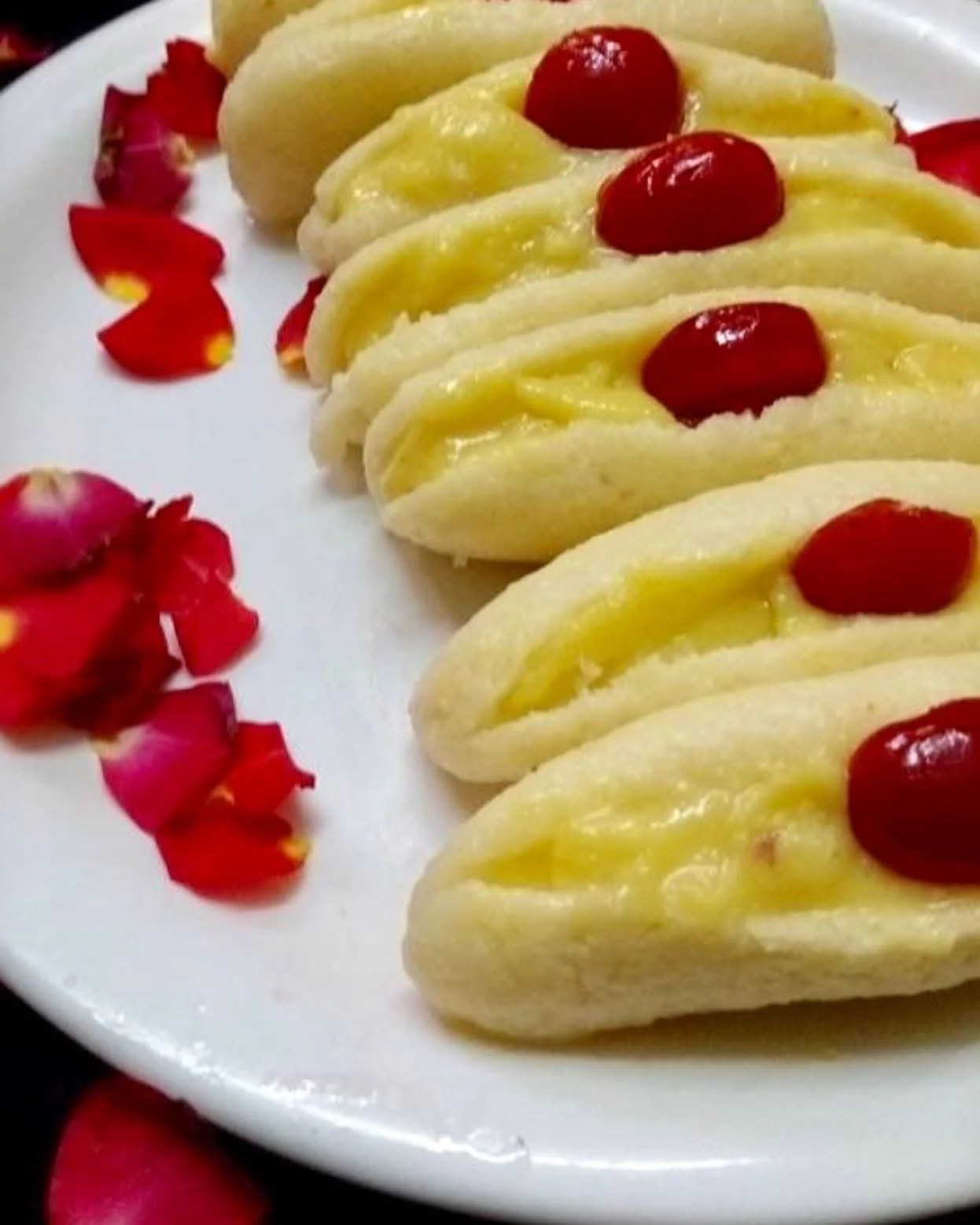

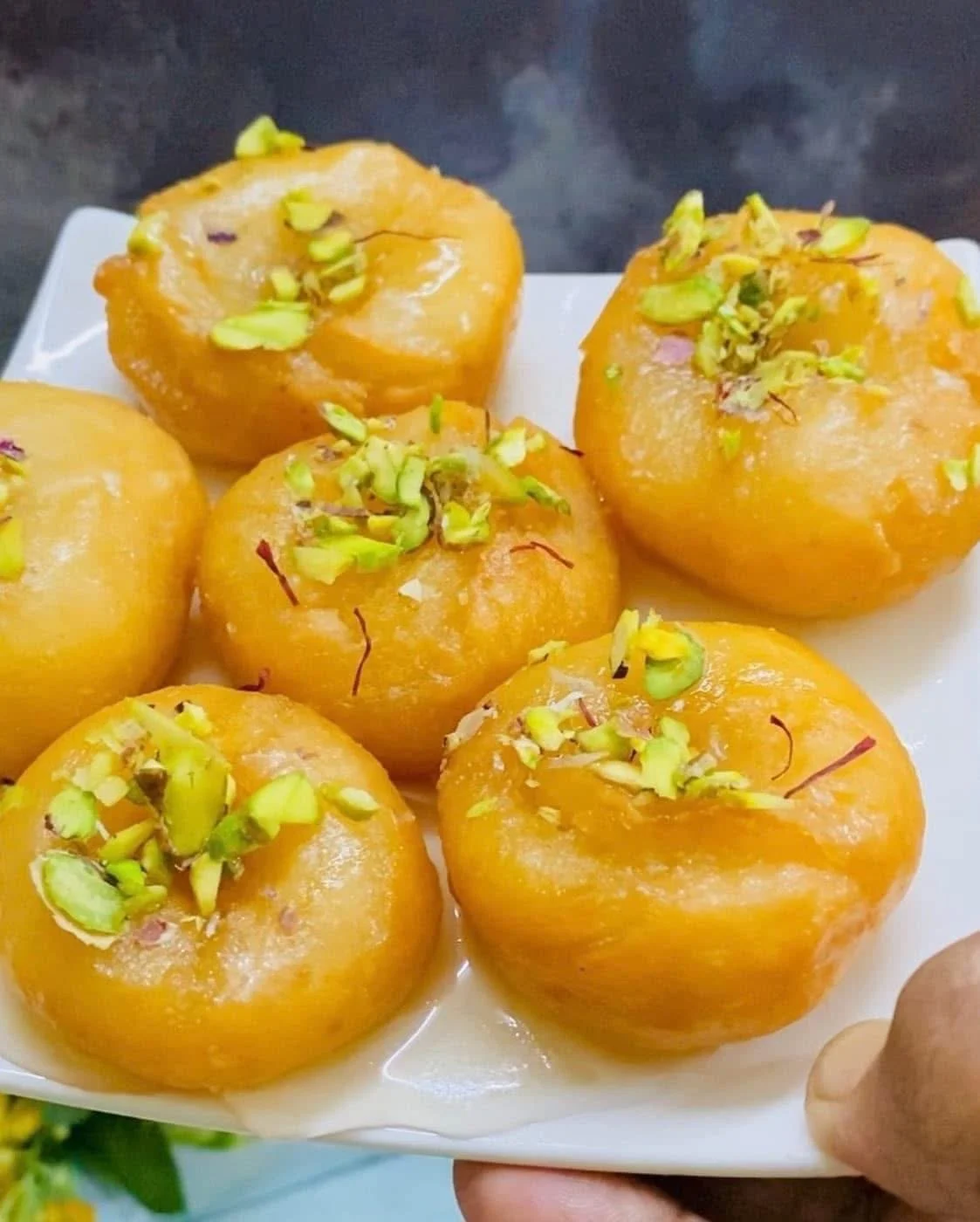

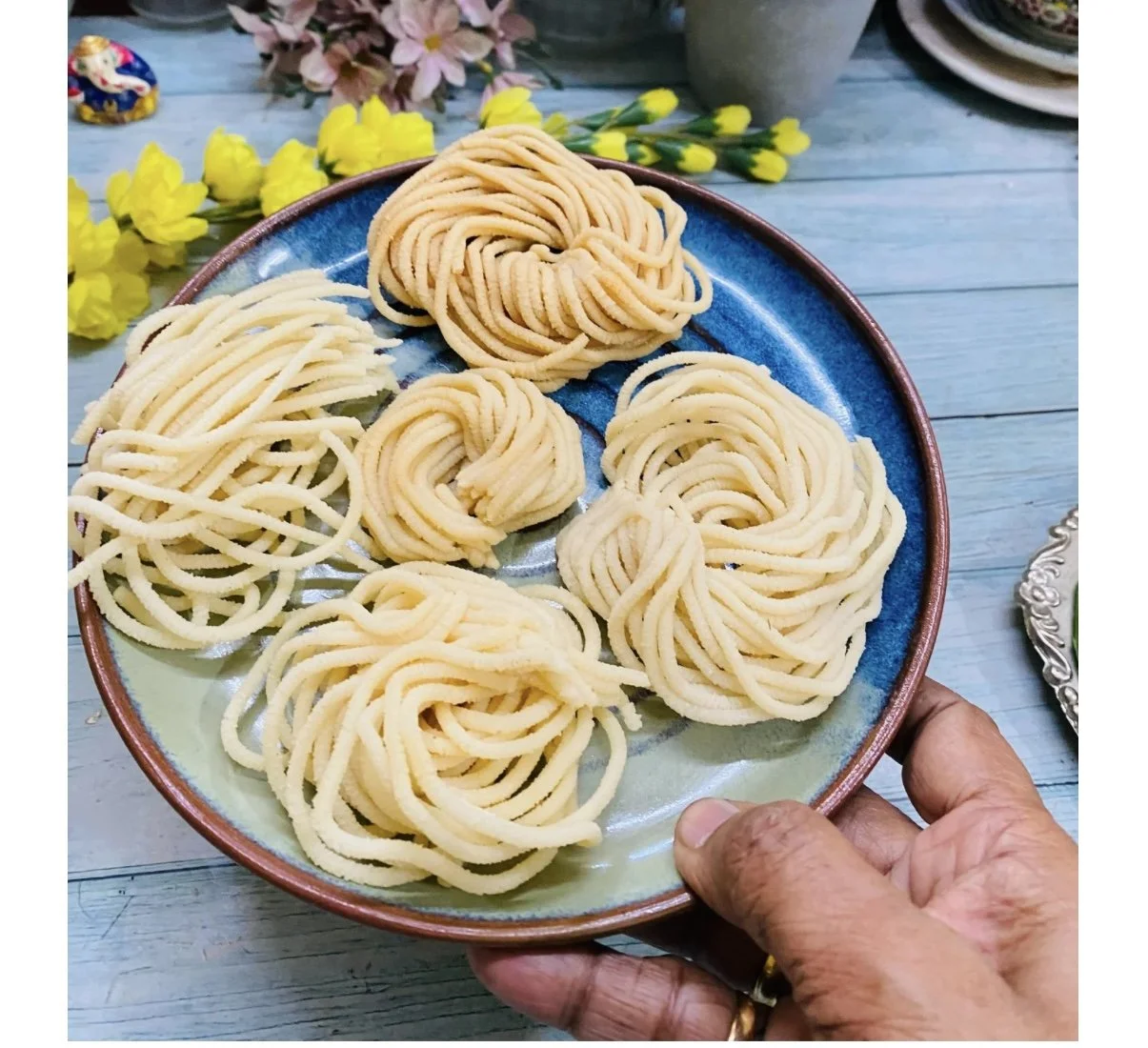








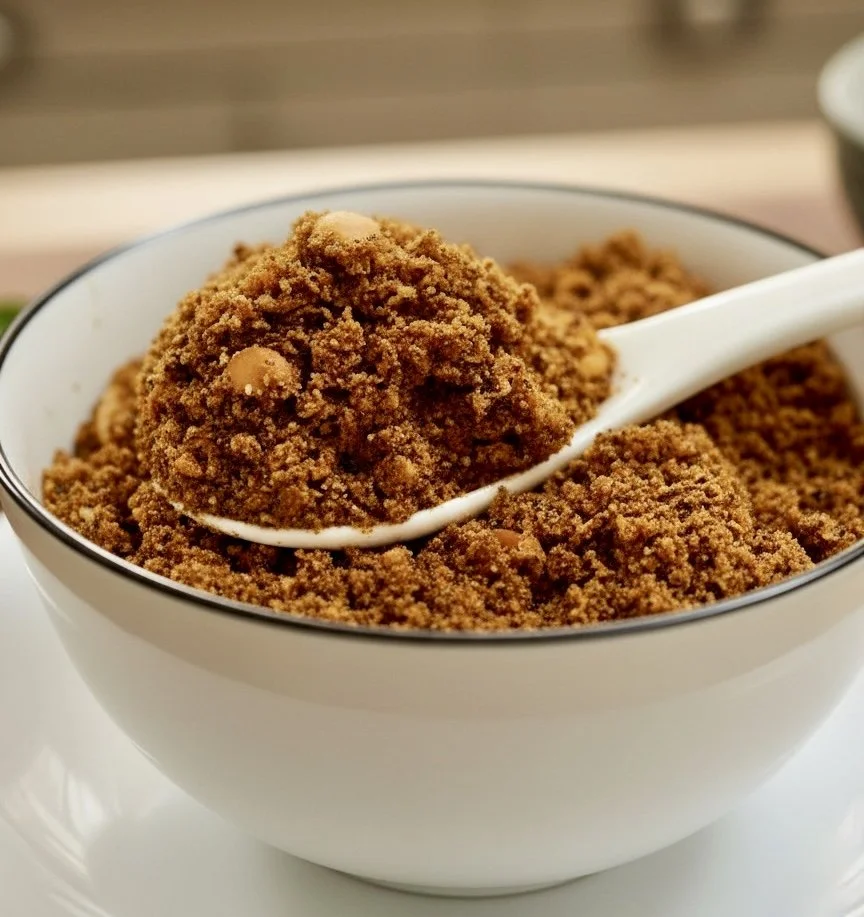
Bring home the authentic taste of Tamil Nadu with this Instant Puliyodharai Podi—a fragrant, tangy-spicy mix that turns plain rice into temple-style Puliyodharai in minutes. Just mix with hot rice and gingelly oil for a delicious, travel-friendly, lunchbox-perfect meal.